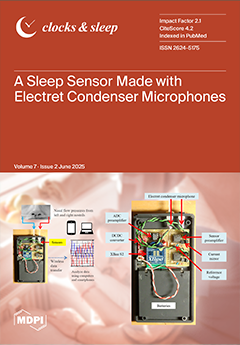Open AccessArticle
Sleep Patterns, Excessive Daytime Sleepiness, and Sleep Disturbance Among First Nations Children in Saskatchewan
by
Chandima P. Karunanayake, Charlene Thompson, Meera J. Kachroo, Donna C. Rennie, Warren Seesequasis, Jeremy Seeseequasis, James A. Dosman, Mark Fenton, Vivian R. Ramsden, Malcolm King, Sylvia Abonyi, Shelley Kirychuk, Niels Koehncke and Punam Pahwa
Viewed by 1791
Abstract
Sleep is essential for maintaining both mental and physical well-being. It plays a critical role in the health and development of children. This study investigates sleep patterns and habits of First Nations children, the prevalence of sleep disturbances, and excessive daytime sleepiness (EDS),
[...] Read more.
Sleep is essential for maintaining both mental and physical well-being. It plays a critical role in the health and development of children. This study investigates sleep patterns and habits of First Nations children, the prevalence of sleep disturbances, and excessive daytime sleepiness (EDS), along with the factors associated with EDS. Our 2024 First Nations Children Sleep Health Study assessed the sleep health of children aged 6 to 17 years living in a First Nation in Canada. Statistical analyses were performed using comparison tests and logistic regression models. A total of 78 children participated; 57.7% were boys. The average age of the participants was 10.49 years (SD = 3.53 years). On school days, children aged 6 to 9 years slept an average of one additional hour, while on weekends, they slept an extra 40 min compared to adolescents aged 10 to 17 years. Only 39.7% of the children (ages 6 to 17) slept alone in a room, with more than 80% of the children sharing a bed every night. Only 30.6% of the children aged 6 to 9 years and 7.2% of the adolescents aged 10 to 17 years adhered to the recommended maximum screen time of 2 h on school days. More than two-thirds of the children reported experiencing sleep disturbances. The prevalence of EDS was 19.7%. After adjusting for age and sex, it was determined that the children who snored loudly and those who did not sleep in their own beds were more likely to experience abnormally high levels of daytime sleepiness. A high proportion of children exceeded the recommended screen time, an important public health issue. Further, identifying sleep patterns among children will facilitate the diagnosis and treatment of disordered sleep.
Full article
►▼
Show Figures






